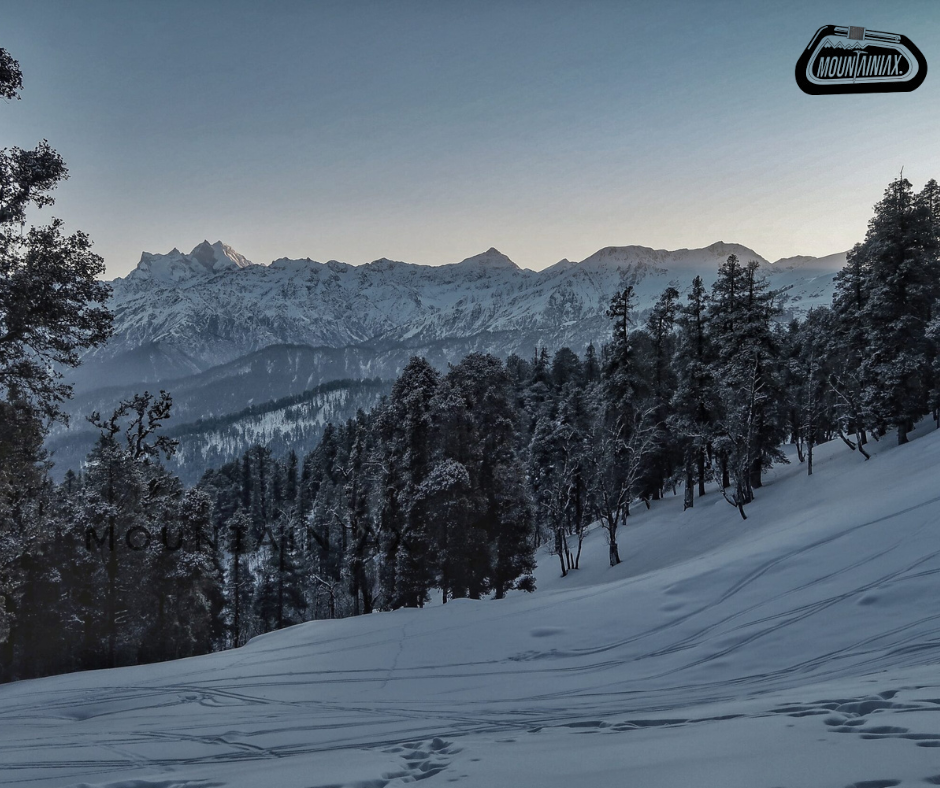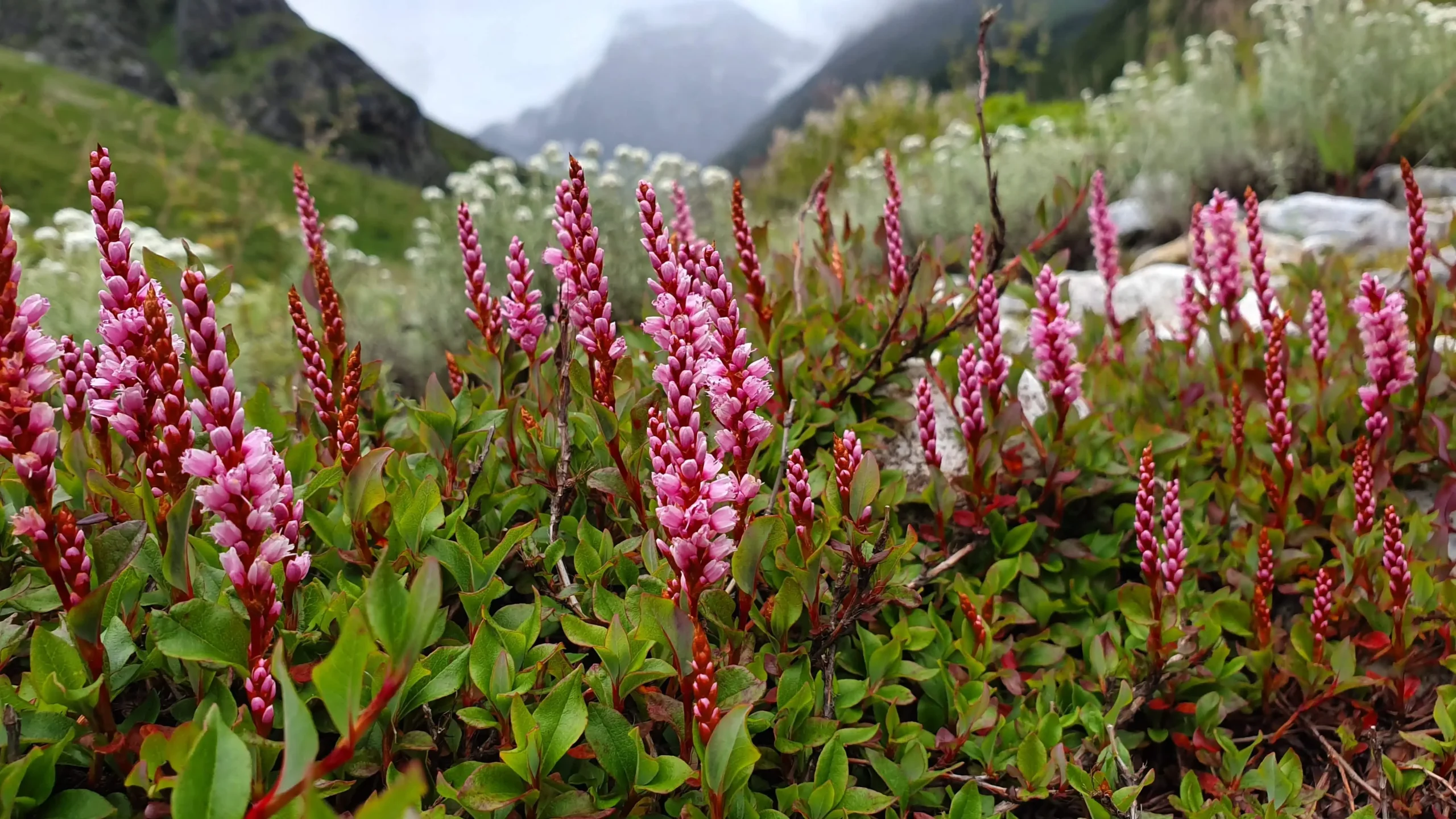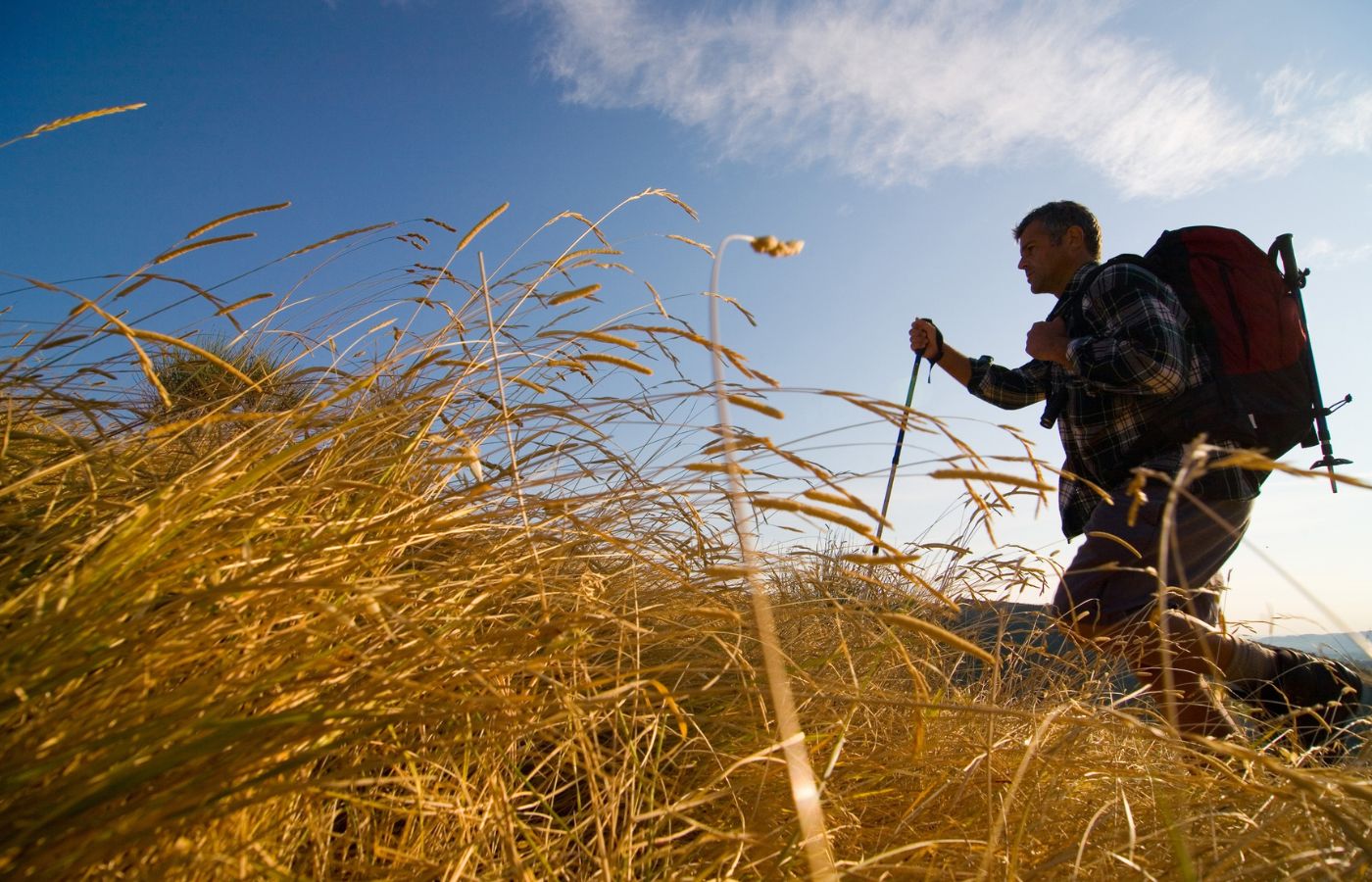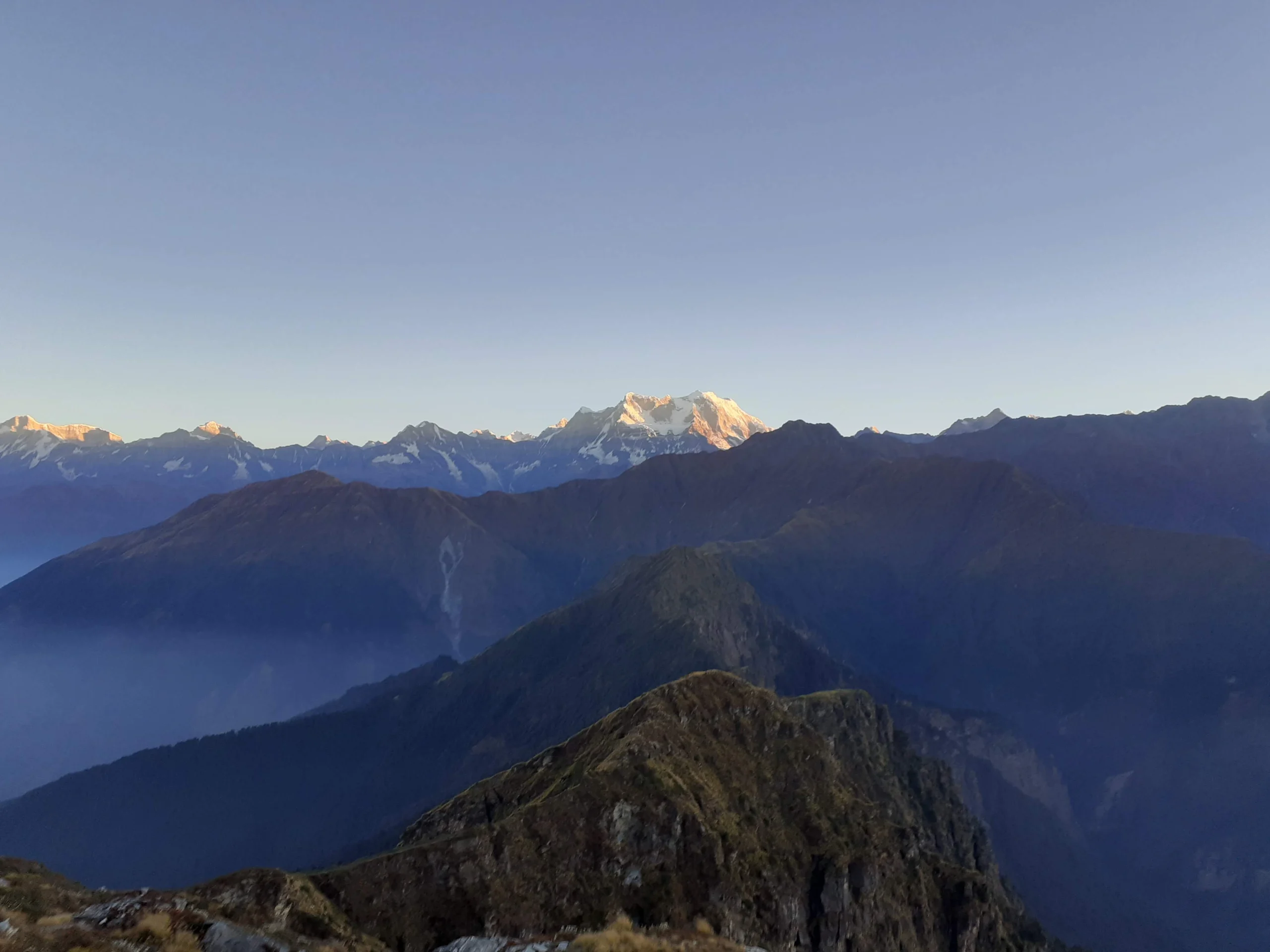Standing at 12,500 feet, feet crunching on snow or soft grass, with giant mountains all around like something from a movie, but it is reality. You can experience all of this at Kedarkantha. It’s a trek in Uttarakhand that’s not too tough but still feels like a huge adventure. It starts in a small village called Sankri, about 7 hours from Dehradun by road, and takes 6 days to cover 20 kilometers.
It’s perfect for people just starting out and those who’ve trekked a bunch already. But there’s something tricky too and it’s picking the right time to go. Every season switches things up. Let’s walk through it step by step.
What the Trail is Like?
Sankri, the basecamp of more than 20 treks in the valley is the place where it all begins. It’s a quiet little place with old wooden temples that look like they’ve been there forever. The air smells fresh, like pine trees, and the trek starts with an easy uphill climb through woods full of tall oaks and cedars. Depending on the month, those trees might be covered in white snow or bright green leaves.
After a day of walking, there’s Juda ka Talab which is a calm lake that looks like a mirror for the trees around it. In winter, it freezes over completely but in summer, it’s surrounded by green hills.
The path doesn’t feel like a big fight, it’s just a long, steady stroll. Tiny villages show up along the way, with wooden houses tucked into the slopes. The whole area is part of the Govind Wildlife Sanctuary, so you might see animals like black bears, snow leopards, or big eagles or maybe just a shadow in the trees or a bird overhead.
The best part is at the top, there’s a spot with stones piled up and a trident pointing to the sky. From there, the view covers huge peaks like Gangotri, Yamunotri, and even far-off . It’s the kind of sight that makes every step feel worth it, no matter how tired the legs get.
Best Time to Visit Kedarkantha Trek
Kedarkantha Trek is good to visit almost all year, except when heavy rain hits in July and August. Each season brings something new, and people pick what sounds fun to them.
- Spring and Summer (April–June): Days are warm and comfy, the temperature is around 15–22°C. Snow starts melting, flowers bloom all over, and the woods turn bright green. It’s not as busy as winter, so it feels more peaceful. The trails get soft with new grass, and the air is full of that fresh, earthy smell after the cold months.
- Fall (September–October): Leaves turn golden and brown and crunch under foot. The air is cool but not freezing, and the mountains stand out sharp against clear skies. It’s a laid-back time, with pretty colors everywhere. This time is perfect for anyone who likes a quieter trip.
- Winter (November–March): This is the big show. Snow covers everything including trees, hills and lakes and turns it into a white wonderland. Nights drop below zero, sometimes way down, but days stay okay at 8–10°C. Most people come between December and March, chasing the snow and those clear, starry nights.
Each season has got its own thing going on. Spring is all about new life, fall has got that calm beauty, and winter’s the wild, snowy adventure. Rainy months are the only time to stay away. More information on that later.
Kedarkantha Trek in the Busy Seasons
Focusing on the popular months shows what makes Kedarkantha special. Here’s the breakdown:
- November and December: Things start cooling off in November, and December turns it up a notch. Nights get cold, down to 0°C or even -10°C, with snow and frost piling up. Days hover around 8–10°C, but wind can make it feel chillier. Fresh snow falls, covering the trails in a soft layer, and sometimes there’s slush underfoot. It’s a rough, wintry scene that pulls in tons of people looking for that classic mountain feel.
- January to March: The cold hangs on tight, with nights staying below zero well into February. Days warm up a bit, climbing to 8–22°C as March rolls in. Snow’s still thick, especially up high, and it sticks around like a blanket over the hills. By April, things start changing as snow melts, new leaves show up on the trees, and the woods get their colors back. Some snowy spots might linger till the end of the month, like little reminders of winter that haven’t let go yet.
These months: December to March see the most action. Frozen lakes and snowy trees make it worth braving the cold, and the crowds prove it.
NOTE: If you want a less crowded trail you should not opt for December 20th to Jan 2nd batches. January and February are the months to experience Kedarkantha from different perspectives !
Risks and Difficulties of Trekking
Kedarkantha Isn’t too hard for a trek that high. It’s pretty doable, even for newbies. Starting at Sankri’s 6,500 feet, it goes up about 1,500 feet a day over 4 days. That slow climb keeps most people feeling fine, as long as they sip water all day. A walking stick is a good idea too as it makes it easier on the legs and helps with balance on uneven spots.
The ground is nice most of the year. Woods have dry leaves to step on, grassy patches feel soft, and gravel paths show the way. Winter switches it up with snow, lots of it from December to April, but the trail stays easy to follow and safe. Rainy months, July and August, are the troublemakers since mud and landslides shut it down completely.
Outside of that, it’s smooth going, though sticking with a guide and group is a smart move. The path isn’t hard, just long, and there’s no help nearby if something goes wrong. The slow rise and clear route make it friendly, even way up high.
Gears to Take
Winter needs a bit more stuff, but it’s not complicated. Micro-spikes and gaiters make snowy parts easy to handle. Ice and slush show up from December to April, but they’re no big problem with the right gear. Summer’s simpler, you just need good shoes and maybe a stick for balance. No matter the time, you should pack the basics and keep a good attitude. The top is reachable only if the feet are ready and the mind is set.
Here’s a simple list of gear to take while trekking to Kedarnath:
- Trekking Shoes: High-ankle, waterproof with good grip.
- Backpack: 50-60 liters, with a rain cover.
- Clothing: Warm layers (thermal, fleece, jacket), waterproof jacket/pants, extra socks.
- Trekking Pole: For balance and support.
- Water Bottle: 1-2 liters, reusable.
- Snacks: Energy bars, dry fruits, chocolates.
- First Aid Kit: Bandages, painkillers, antiseptic.
- Sunglasses: UV protection.
- Cap/Gloves: For sun and cold.
- Flashlight/Headlamp: With extra batteries.
How to Reach Kedarkantha
Sankri is the starting point, and getting there’s part of the trip. From Dehradun, it’s a 200-km ride which takes 9–10 hours by bus or cab. Buses leave from Prince Chowk near the train station at 5 a.m. and 7 a.m. (check the times, they can shift).
Regular or fancier buses like AC Volvos keep it comfy. Shared taxis head out around 7:30 a.m. from the same area, cutting the ride a bit shorter. Private cabs cost more, around Rs. 6,500–7,000, but go straight to the basecamp.
From Delhi, there’s a few ways to go:
- Train: Dehradun is the closest station. Trains like the Nanda Devi Express (6 hours overnight) or Dehradun Express (7–10 hours) link up with Delhi. Then it’s a bus or cab to Sankri.
- Flight: Jolly Grant Airport in Dehradun’s the nearest, it’s 45 minutes from Delhi. Flights also go to Chandigarh (50 minutes), Shimla (1 hour 25 minutes), or Kullu (1 hour 20 minutes), with 5–7-hour drives to Sankri after landing.
- Road: Buses from Delhi’s ISBT Gate to Rohru (13–14 hours, 438 km) get close, then a 3-hour taxi ride wraps it up. Or grab a cab from Delhi for the whole stretch.
Jolly Grant’s the closest airport overall, and Purola’s the last cash machine before Sankri. It’s a bit of a haul, but that’s what makes it fun.
Wrapping It Up
Kedarkantha is a treat any time. Spring’s got flowers, fall’s got colors, and winter’s got snow. December to March pulls the biggest crowds, with frozen lakes and starry nights that feel like a mountain fairy tale. April’s warm-up or October’s cool-down have their own charm too.
The trek is not hard, it offers slow climbs, safe paths, not much worry, yet it delivers big with amazing views. Gear up for winter, keep it light in summer, and skip the rainy mess. Whenever it happens, Kedarkantha’s top spot and wide-open vistas make it a trip to remember. Pick a time, pack up, and let the mountains take over.
If you are looking for vibrant experience in the himalayas connect with: mountainiax












